-
Posts
12421 -
Joined
-
Last visited
-
Days Won
552
Content Type
Profiles
Forums
Events
Everything posted by Fiery
-
Please right-click on the bottom status bar of AIDA64 main window --> Video Debug --> nVIDIA GPU Registers. Copy-paste the full results into this topic, or attach the results as a TXT file to your post. You may need to enable status bar in AIDA64 / main menu / View first. Thanks, Fiery
-

Ryzen 3700X instant crash in FPU test
Fiery replied to NIoSaT's topic in Benchmarking, system performance
It's not normal at all. I suspect there's a power delivery issue that prevents your CPU from working stable under heavy load. My first move would be to try to get a replacement (or borrow one) PSU and check if it makes a difference. -

Cannot get AIDA64 extreme temp values in Aquasuite
Fiery replied to CPJMMXIII's topic in Hardware monitoring
Aquasuite is not our software, so I cannot comment on potential bugs in that particular software. Try to ask aquacomputer support about this issue. -

fixed: Missing Fans (MSI X299 XPower Gaming AC / MS-7A91)
Fiery replied to Tom77's topic in Hardware monitoring
We've asked MSI for more technical information on your motherboard. As soon as we get a response, we'll fix this issue and I'll post a message into this topic to notify you about the resolution. Thank you! -
Can you please post a screen shot of the Sensors window of HWiNFO64 where it shows the fan RPMs for your notebook? Most likely it will show the interface it uses to access the fan RPM sensor readouts.
-

Temperature spikes -- bug? (Asus ROG Strix B450-I Gaming)
Fiery replied to Monka's topic in Bug reports
The fluctuating system load (and the resulting thermal spikes) are most likely due to the GPU subtest. Try to use only the CPU+FPU+Cache tests and check if it makes the thermal readings more stable. -

AIDA64 Extreme Home Version 6.00.5100 with Samsung-SSD
Fiery replied to Thiersee's topic in Hardware monitoring
Apparently, yes. -

will be max. cpu temperature at real time in a near future?
Fiery replied to vidalsh68's topic in General Discussion
You can monitor minimum and maximum temperatures using the Statistics tab of the AIDA64 System Stability Test module or its Logging facility (AIDA64 / main menu / File / Preferences / Hardware Monitoring / Logging). -

AIDA64 Extreme Home Version 6.00.5100 with Samsung-SSD
Fiery replied to Thiersee's topic in Hardware monitoring
It's a feature. The secondary SSD temperature is just as valid as the primary. We've heard that it reflects the SSD controller on-die temperature, but it was never confirmed by Samsung. -
EC1 and EC2 thermal readings are exclusive to Gigabyte motherboards.
- 7 replies
-
- thermal
- temperature
-
(and 3 more)
Tagged with:
-
Yes, but the motherboard should have them included in the box.
- 7 replies
-
- thermal
- temperature
-
(and 3 more)
Tagged with:
-

How to install Lineage OS 15.1 on Xiaomi Redmi 2 Prime
Fiery replied to akbar's topic in Android Forum
We're not experts on Lineage OS, but maybe someone else reading this can chime in and help you out. -

Low +12V voltage reading (Asus Prime X470-Pro)
Fiery replied to Paul Ferguson's topic in Hardware monitoring
Thank you! It seems the sensor values are provided by Asus WMI on your system. That interface has a known bug in the recent BIOS updates, and it causes an incorrect +12V voltage to be reported. Asus said they will fix this up soon in a form of a new BIOS update for their AM4 motherboards. -
Those are headers on the motherboard where you connect thermistor cables.
- 7 replies
-
- thermal
- temperature
-
(and 3 more)
Tagged with:
-
Thank you. Did you rename generic values? I'm just asking because those rails are not monitored by the BIOS Setup (UEFI Setup) nor by Gigabyte's own utility AFAIK.
-
Those are the thermal readings that the BIOS Setup (UEFI Setup) labels as EC_TEMP1 and EC_TEMP2. Previously we've put those readings among generic thermal readings (e.g. Temperature #1), but now they got their dedicated temperature slot in the AIDA64 hardware monitoring module.
- 7 replies
-
- thermal
- temperature
-
(and 3 more)
Tagged with:
-
The above mentioned new AIDA64 beta build is now available for download at: https://www.aida64.com/downloads/latesta64xebeta After upgrading to this new version, make sure to restart Windows to finalize the upgrade.
-

please add "lock panel" option to sensor panel context menu
Fiery replied to stillwater's topic in Brainstorming
Here's the mentioned new AIDA64 beta update: https://www.aida64.com/downloads/latesta64xebeta After upgrading to this new version, make sure to restart Windows to finalize the upgrade. -
Meanwhile we've added PCH temperature to AIDA64 on your motherboard: https://www.aida64.com/downloads/latesta64xebeta
-
Thank you for your feedback
-
Please avoid posting a single question into multiple topics. I've replied in your other topic. This topic is locked.
-

Low +12V voltage reading (Asus Prime X470-Pro)
Fiery replied to Paul Ferguson's topic in Hardware monitoring
Please right-click on the bottom status bar of AIDA64 main window --> Sensor Debug --> ISA Sensor Dump. Copy-paste the full results into this topic, or attach the results as a TXT file to your post. You may need to enable status bar in AIDA64 / main menu / View first. Thanks, Fiery


